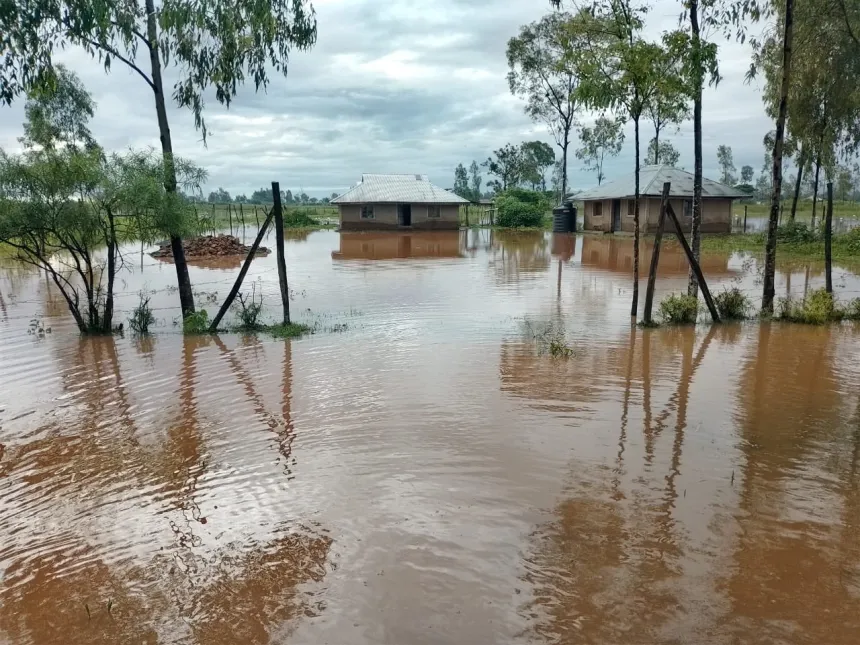More than 1,000 households living near Lake Naivasha are once again facing the threat of displacement as floodwaters encroach on homes and farmlands for the third time in five years.
According to the Kenya Meteorological Department, rainfall will continue over the next six days across various regions, including the Central Highlands, Lake Victoria Basin, Rift Valley, Coast, Western, and Northwestern Kenya.
Kihoto Estate, home to many workers employed in the surrounding flower farms, has been hit the hardest. Dozens of homes have been submerged, forcing some families to seek refuge in nearby areas.
Concerns are mounting over possible disease outbreaks as sanitation facilities such as pit latrines and boreholes have been overtaken by floodwaters.
“This is a dire situation. The water level continues to rise every day, flooding homes and schools,” said Richard Mwathi, one of the affected residents. “Many of us have no choice but to remain in our flooded homes as we lack the means to move elsewhere.”
Mwathi urged the Nakuru County Government to step in, warning that the stagnant floodwaters could spark the spread of diseases like cholera and malaria.
His concerns were echoed by fellow resident Alice Kibe, who noted that this is the third flooding incident in recent years. She expressed alarm that contaminated water sources could pose a major health hazard.
“Most of the homeowners here built using bank loans. Now they’re stuck they have no alternative housing options,” Kibe said. “Small-scale farms have been destroyed and children are struggling to get to school.”
Elder James Muchiri stressed the need for long-term solutions, proposing the construction of dykes around the lake to keep rising waters at bay. “Families have lost homes, and property worth millions has been either destroyed or looted,” he said.
Resident Paul Gitau supported the call for dykes, noting that similar interventions have proven effective in other flood-prone areas around the lake.
In a phone interview, Nakuru County’s Chief Officer for Public Health, Joyce Ncece, said the county had already issued warnings advising residents in high-risk zones to evacuate.
“This isn’t the first time we’ve seen this happen,” she said. “People move out when the lake overflows and return when the situation seems to improve. It’s a recurring cycle.”









